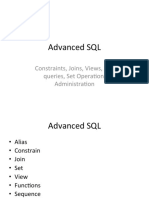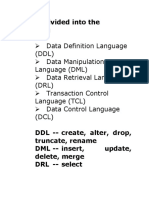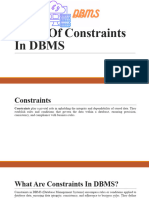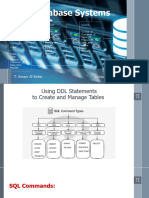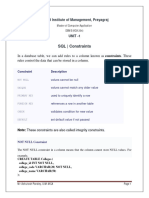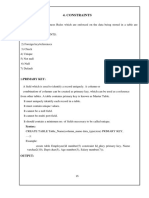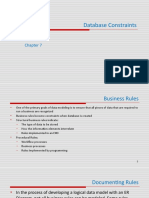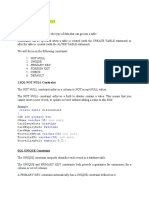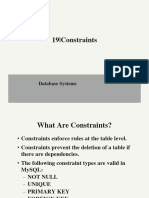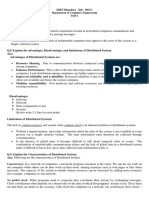0% found this document useful (0 votes)
37 views34 pages3 Oracle Developer Tables Indexes Essentials m3 Slides
The document provides an overview of table constraints in databases, including primary keys, foreign keys, and check constraints. It explains the importance of these constraints for data integrity, with examples of how to define and manage them in SQL. Additionally, it discusses the implications of using options like 'on delete cascade' and deferred constraints for maintaining relational integrity.
Uploaded by
Employee_details_123Copyright
© © All Rights Reserved
We take content rights seriously. If you suspect this is your content, claim it here.
Available Formats
Download as PDF, TXT or read online on Scribd
0% found this document useful (0 votes)
37 views34 pages3 Oracle Developer Tables Indexes Essentials m3 Slides
The document provides an overview of table constraints in databases, including primary keys, foreign keys, and check constraints. It explains the importance of these constraints for data integrity, with examples of how to define and manage them in SQL. Additionally, it discusses the implications of using options like 'on delete cascade' and deferred constraints for maintaining relational integrity.
Uploaded by
Employee_details_123Copyright
© © All Rights Reserved
We take content rights seriously. If you suspect this is your content, claim it here.
Available Formats
Download as PDF, TXT or read online on Scribd
/ 34

